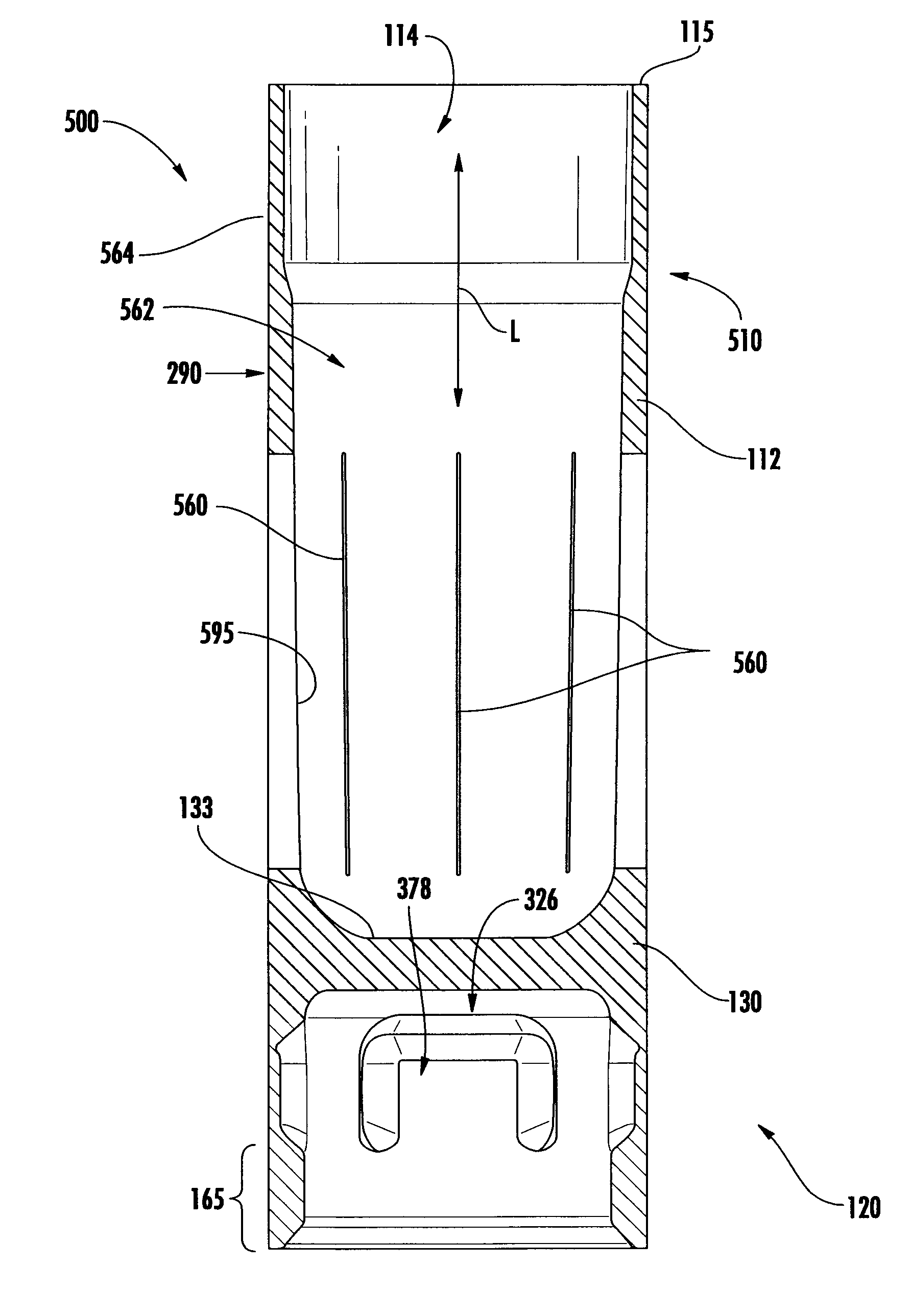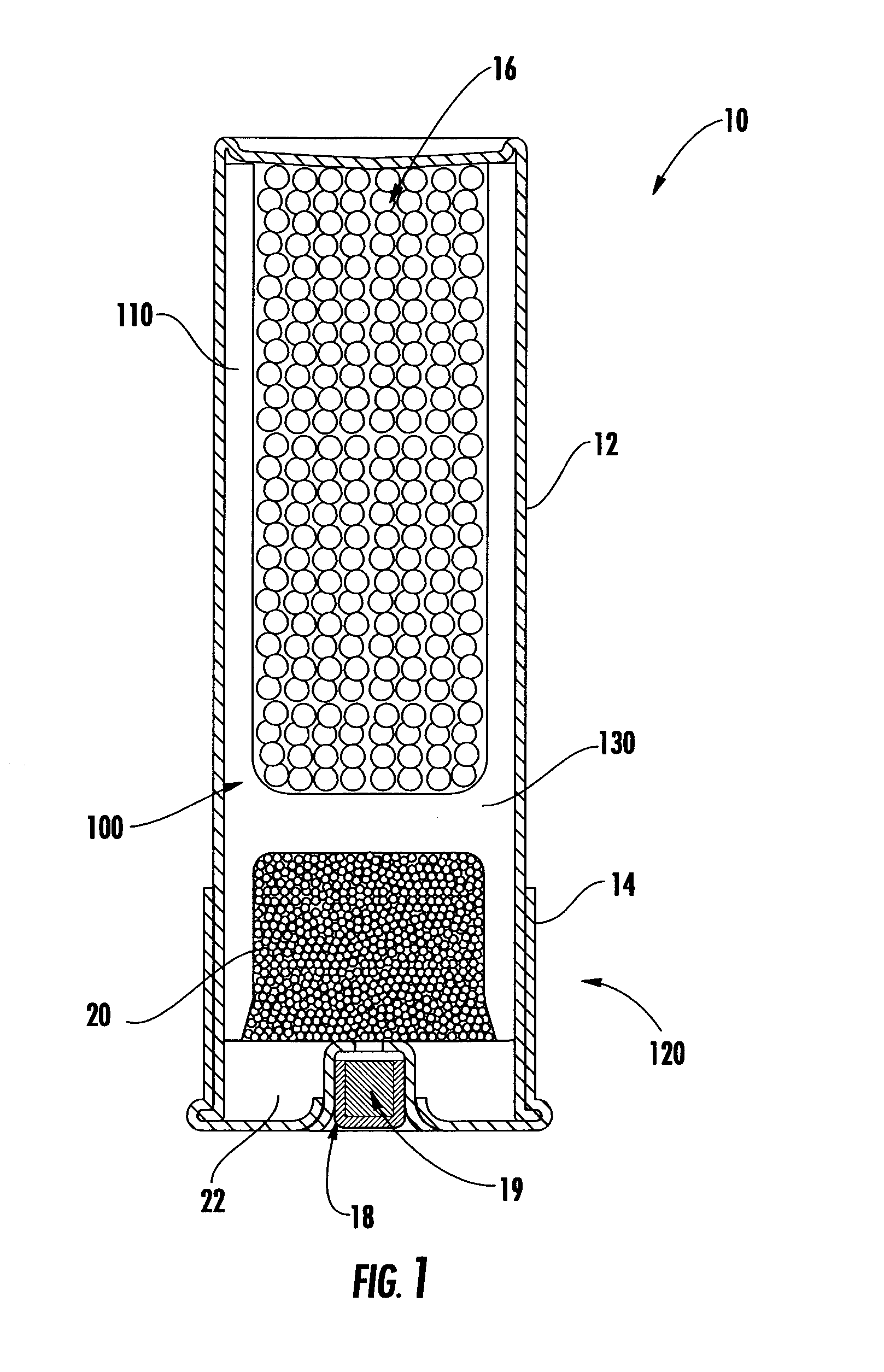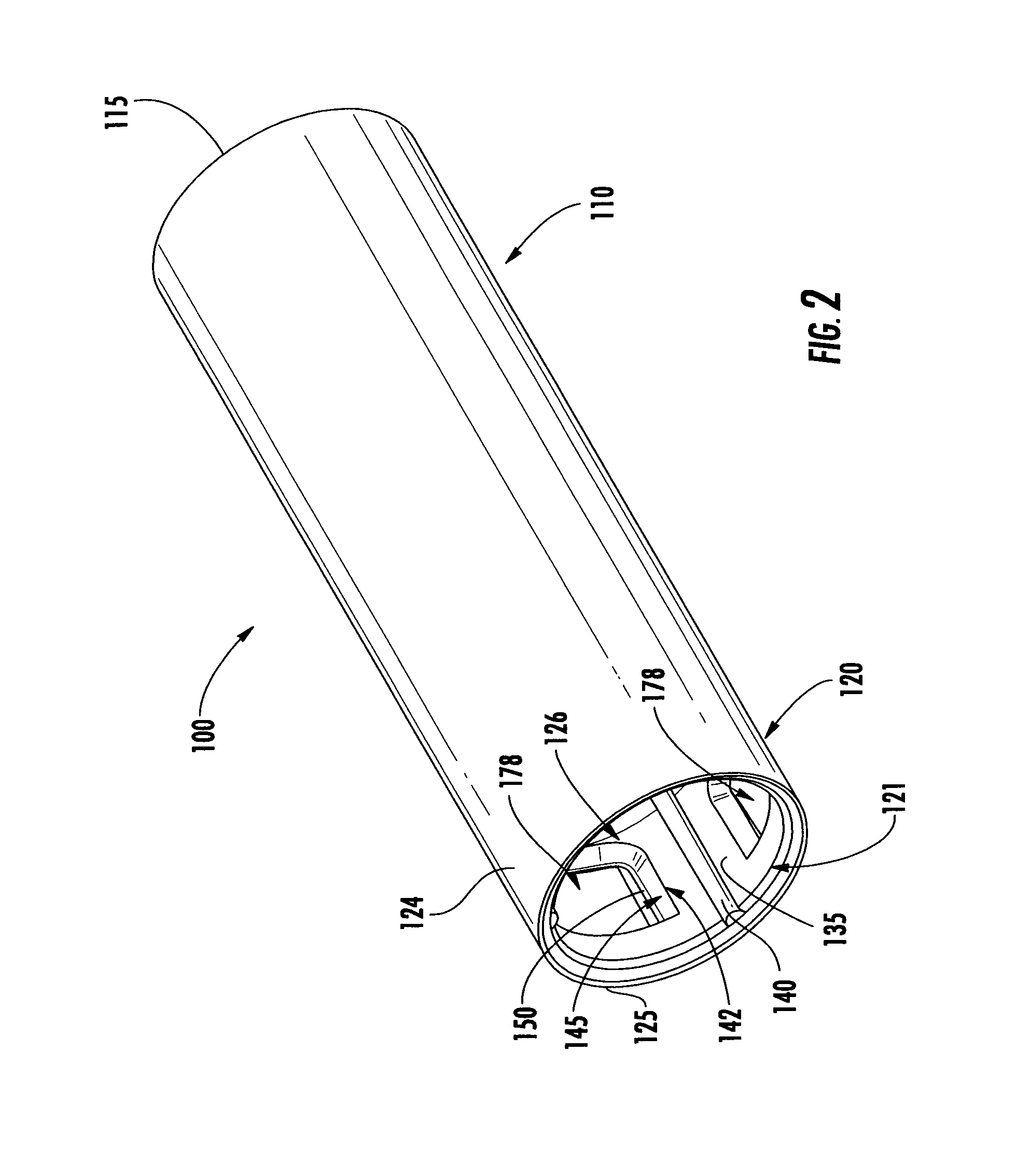Shot cup wad
a technology of shot shell and wad, which is applied in the field of shot shells, can solve the problems of inconsistent and unpredictable placement of shot patterns, veering or directing shot shell wads, and adverse effects on shot patterns, and achieves the effects of facilitating a substantially rapid separation, enhancing the ability of shot pellets, and speeding up the wad
- Summary
- Abstract
- Description
- Claims
- Application Information
AI Technical Summary
Benefits of technology
Problems solved by technology
Method used
Image
Examples
first embodiment
[0072]FIGS. 16A-16D are general detail views showing variations on the contoured depressions 345 (FIG. 15C) with various redirector features 352a, 352b, 352c, 352d formed in the end of respective legs 344a, 344b, 344c, 344d of the respective contoured depressions 345a, 345b 345c, 345d. The legs 344a, 344b, 344c, 344d further can have respective alternative shapes with respect to the straight legs 144 shown in FIGS. 2-7 of the Broken arrows 309a, 309b 309c, 309d show an example of a final or end direction of the tearing forces and an example of the extent they can be redirected relative to the rearward end 125 of the shot cup according to exemplary embodiments, though other directions of such forces and tearing also can be provided.
[0073]FIGS. 16A-16C illustrate respective examples of embodiments of the contoured depressions formed in the interior surface of the rear portion of the shot cup. FIG. 16D is a partial side view of the exterior surface of a shot cup showing the contoured ...
sixth embodiment
[0086]FIGS. 21A-21C illustrate a wad or shot cup 600 according to the disclosure. Shot cup 600 can have a structure that is generally similar to one or more of the embodiments discussed above, except for variations noted and variations that will be apparent to one of ordinary skill in the art. Accordingly, similar or identical features of the embodiments have been given like or similar reference numbers in most of the drawing figures. As shown in FIG. 20A, the shot cup 600 includes several V-shaped, longitudinal indentions (essentially, angular valleys) 680 formed in the outer surface 690 of the forward cylindrical portion 610. Each of the longitudinal indentations 680 can include a respective longitudinal slot 660. The longitudinal indentations 680 and the associated longitudinal slots 660 can be arranged in a series 662 in a slit region D4 and can be spaced apart from the forward end 115 of the shot cup 600 by the distance D3. Accordingly, the un-slit portion 564 can extend betwee...
PUM
 Login to View More
Login to View More Abstract
Description
Claims
Application Information
 Login to View More
Login to View More - R&D
- Intellectual Property
- Life Sciences
- Materials
- Tech Scout
- Unparalleled Data Quality
- Higher Quality Content
- 60% Fewer Hallucinations
Browse by: Latest US Patents, China's latest patents, Technical Efficacy Thesaurus, Application Domain, Technology Topic, Popular Technical Reports.
© 2025 PatSnap. All rights reserved.Legal|Privacy policy|Modern Slavery Act Transparency Statement|Sitemap|About US| Contact US: help@patsnap.com



